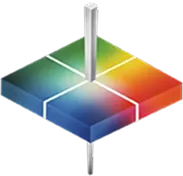
The versatility of Japanese soy sauces is helping to expand the global soy sauce market. Image Source: Unsplash user Kuba Boski
“My mother always kept a gallon of Kikkoman Soy Sauce in the kitchen cubby,” writes Jenny Lee-Adrian. Whether preparing marinades, dipping sauces, or fried rice, the Kikkoman was an ever-present part of cooking in Lee-Adrian’s household. It wasn’t until years later, when she began cooking for herself that she realized there was a world of Japanese soy sauces out there beyond her mother’s beloved Kikkoman and these sauces can “vary wildly in flavor, texture, and appearance.”1
Indeed, as Florence Fabricant wrote over 20 years ago, “Soy sauce has many personalities. Its saltiness can vary from breathtakingly intense to mellow and muted. Its consistency ranges from watery to viscous.”2 This diversity makes Japanese soy sauces ideally suited for a broad variety of uses, whether you’re looking for a dark saishikomi or a light usukuchi. The varied usability of soy sauces combined with an increased propensity of consumers to eat at home and a growing body of research confirming the health benefits of soy help to explain why the soy sauce market is forecasted to increase significantly in the coming years.3
As the soy sauce market expands and consumers become more informed about soy sauce options, manufacturers must remain vigilant in monitoring the quality of their products to ensure they meet both industry and customer standards. As such, integrating spectrophotometric color measurement is an increasingly vital part of soy sauce production, even for those companies using time-honored, traditional methods of manufacturing.

The colors of Japanese soy sauces can vary drastically owing to their raw ingredients and processing methods. Image Source: Flickr user Hiroyuki Ishizawa



